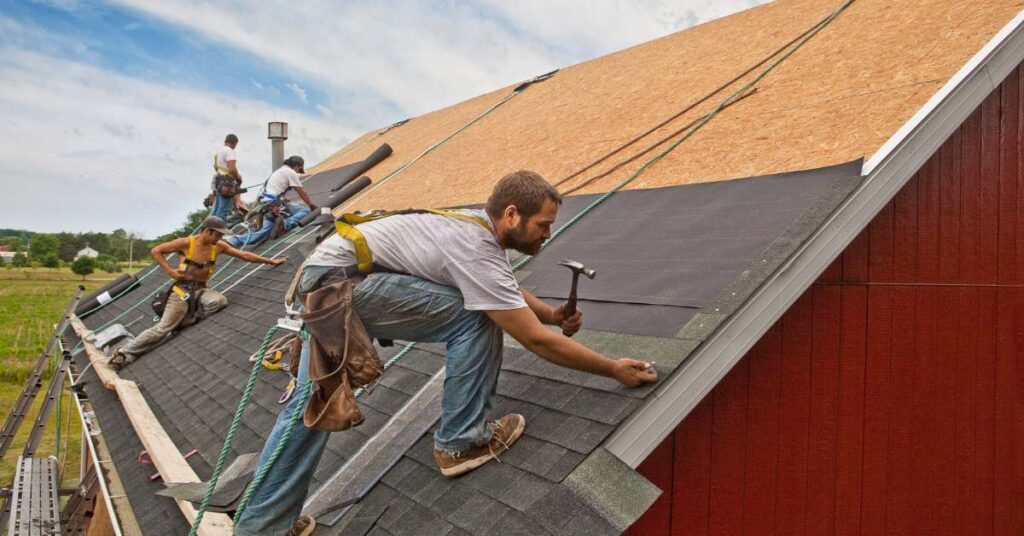From keeping rain and snow out to protecting the integrity of the home’s structure, a roof serves one of the most important functions for any home. However, a roof is far more than just shingles or tiles – proper installation is key to ensuring the roof can stand up to the test of time and withstand all weather conditions.
In this step-by-step guide, we’ll break down the fundamentals of roof installation from start to finish. We’ll explain the essential preparation work, necessary underlayment, recommended fastening patterns, tips for installing either shingles or tiles, and important final inspection practices. Whether you’re a professional roofer or a homeowner taking on a DIY project, following these techniques will help guarantee your new roof is installed correctly and built to last.
Table of Contents
Key Considerations in Roofing Installation
Before embarking on the installation process, there are key factors that should be carefully considered. These considerations determine the success of your roofing project and ensure the longevity and durability of your roof.
The Right Material
Choosing the correct roofing material is one of the most important decisions you will make. The material should not only match the architectural style and aesthetic of your home but should also be suitable for the climate in which your home is located. Materials like asphalt shingles, metal, wood, or tile each offer advantages and drawbacks.
Proper Ventilation
Adequate roof ventilation is essential in maintaining the lifespan of your roof. Proper ventilation prevents the buildup of heat and moisture that can lead to roof deterioration and mold infestation. It also contributes to a balanced temperature between the attic and the roof.
Accurate Measurements
Accurate measurements are crucial to ensure that the correct quantity of roofing materials is ordered. A slight miscalculation can result in budget overages or delays in project completion.
Hiring Qualified Professionals
While it might be tempting to save money by installing the roof yourself, roofing can be a dangerous and complex job. Hiring a qualified professional ensures that the installation is done safely, correctly, and in compliance with building codes.
The Installation Process
With the right materials in hand and a qualified team ready to begin, it’s time to proceed with the installation process.
Preparing the Roof Deck
The first step in the installation process is to prepare the roof deck. This involves removing old shingles, clearing the deck of any debris, and thoroughly inspecting the underlying structure for damage. Any rotten or damaged wood should be replaced to ensure a solid base for the new roofing materials.
Installing the Underlayment
Once the deck is ready, the underlayment is installed. This layer is crucial as it provides an extra barrier against water and wind. It’s usually made of a water-resistant or waterproof material that is rolled out and fastened to the roof deck.
Laying the Roofing Material
After properly installing the underlayment, it’s time to lay the chosen roofing material. Whether you’re using shingles, tiles, or metal panels, each material has specific installation guidelines that must be followed to ensure maximum durability and longevity.
Final Inspection
The final step in the roof installation process is a thorough inspection. This is to ensure that all materials have been installed correctly and that there are no visible signs of damage or potential leaks. It is also important to get a professional’s opinion to ensure that the roof has been installed according to building codes and manufacturer’s specifications. Contact them to arrange for a final inspection and obtain installation certification.
Maintenance and Care
Proper maintenance and regular inspections are crucial in extending the lifespan of your roof. Inspecting for any potential leaks, cleaning out gutters, and removing debris from the surface can help prevent major damages and costly repairs down the road.
Related Articles:
Mirror Projects to Transform Your Home
Conclusion
Proper roofing installation ensures a strong, durable, and long-lasting roof for your home. You can ensure a successful roofing project by considering important factors such as materials, ventilation, and measurements and hiring qualified professionals. Following these fundamentals and paying attention to detail during the installation process will result in a roof that looks great and provides reliable protection for your home. Remember, a well-installed roof is an investment in the future of your home.


